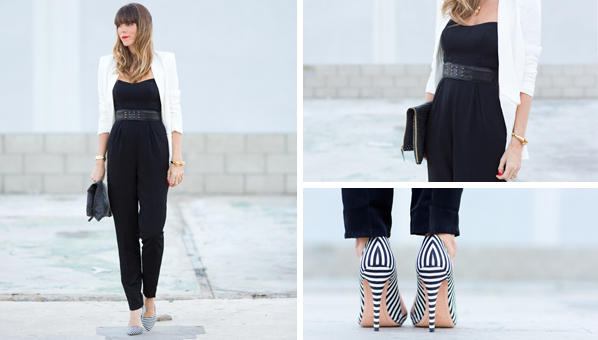This is an archived article and the information in the story may be outdated. Please check the time stamp on the story to see when it was updated last.

Because jumpsuits are so easy to hop in and out of, they are generally reserved for those days in the spring and summer when you just don’t want to wear a dress anymore. Like dresses, the jumpsuit is incredibly versatile and can, depending on the cut, be flattering for a lot of different body types. Plus, in general, because the fabric needs to hang a bit more loosely to give the piece its not-a-body-suit style, jumpsuits are pretty lightweight to wear.
All of these things make them really great for warmer weather and kind of not great at all for the colder seasons — but there’s a lesson in creative styling to be had here.
Winter jumpsuits, though not generally thicker than their summer counterparts, do often cut down on the floral everywhere mess and opt for more all-over colors like black, navy, emerald and burgundy. Sleeves get longer, too, and jersey materials start to become more commonplace (for most jumpsuits, silk is the usual fabric used. For colder weather versions, jersey becomes popular as well).
Here is what you need to know if you’re going to make your jumpsuit work in the winter without freezing to death:
- Layer. Obviously. Pull on tights and a spaghetti strap tank underneath to add an extra layer of warmth.
- Work with the color. Because most winter jumpsuits are monochromatic, add a blazer (think black and white like above) or a knit scarf to help keep you warm.
- Go for the jersey. If you don’t already have a jumpsuit and are looking to buy, then go for one with jersey material for this time of the year. It is warmer and, honestly, a lot more comfortable than the silk versions.
Put your creative styling to the test. After all, this is how you get your picture on a street style blog.




























